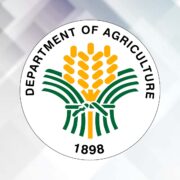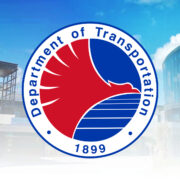Failed agriculture, failed state

I’m convinced that our failures as a nation largely trace back to failures in agriculture. I have also long been convinced that our failures in agriculture trace back to failures in governance and institutions.
It’s not lack of knowledge and technology; we still have among the best brains in the agricultural sciences, and many of our neighbors’ agricultural scientists trained here, especially at the University of the Philippines Los Baños and the International Rice Research Institute. It’s not inferior natural endowments. Our soils are no less fertile, and waters for our fisheries far more abundant than in our neighbors. It’s not lack of human power; Filipinos, especially from rural areas, are in fact forced to seek gainful work overseas by the millions. Yes, we have a disadvantage in exposure to destructive typhoons, but so does Vietnam, which has, nonetheless, come from behind and gone far ahead of us in farm performance. We actually have what it takes to have a farm and fisheries sector as dynamic as what our now more prosperous neighbors have achieved.
The difference with our neighbors lies in how we’ve governed and managed the sector. Just look at our agriculture bureaucracy’s checkered history of corruption scandals, politicized and populist decision-making, excessive top-down management, and overall ineffectiveness. When the President finally appointed a full-time secretary of the Department of Agriculture (DA) after more than a year of taking on the job himself, I humbly offered unsolicited advice in this column, summed up in three S words: scale, support, and subsidiarity (“To our new DA chief,” 11/7/23).
On scale, I suggested that we copy how our neighbors consolidated small farms into efficient large operating units to lower costs via economies of scale. On support, I urged a shift from relying on defensive trade protection to aggressive nurturing via appropriate support for our farmers toward sustained improvement in productivity and international competitiveness. On subsidiarity, I suggested that the DA move away from top-down governance but instead work through the provinces, which must take responsibility and accountability for coordinating their municipalities in strengthening farmers and fishers. I called attention to how his predecessor had rolled out the very promising Province-led Agriculture and Fisheries Extension System or Pafes, which has already been picking up steam. It is proving to be a better way to deliver the second S of support to help our farmers stand shoulder to shoulder with their Asean counterparts, and stop fearing imports but rather see them as healthy competition to keep them on their toes. In the end, this is what will keep our food prices low, foster agri-based industries that are export competitive, and assure food security for our poor—the way things have been in our neighbors.
We all need to understand the critical importance of a strong farm sector to the rest of our economy and society, especially now that resurging inflation driven by food prices is prompting loud calls for wage increases. Our failures in agriculture led to much higher food prices than in our neighbors, especially for our rice staple, our primary wage good. Costlier wage goods, defined as the necessities that workers need to survive, necessitate wages higher than need be, and in turn, make it harder to attract job-creating and poverty-reducing investments.
Our wide poverty and high food prices led to high rates of severe child malnutrition and stunting, and their resulting weak cognitive and learning abilities compound the failures of our damaged education system. Not only does the poor state of education seriously threaten the quality of our future workforce, it also explains the political immaturity that yields the kind of leaders we keep voting into power. And it’s these very leaders who push us ever closer to being a failed state; not a few believe we already are.
In the past year, agriculture’s performance was abysmal. Output and incomes in the sector kept dropping in the last three quarters, ending in an overall annual decline of -1.6 percent, from as deep as -9.3 percent in sugarcane to -1.2 percent in pineapple. Now we see headlines on impending shortages of tomatoes, eggs, and more. It’s convenient to blame bad weather for the glaring negative numbers almost all across our various crops, yet destructive typhoons have always been a fact of life in our farm areas. Persistent declines in farm performance point to systemic weakness. As an Inquirer editorial argued last November, we must “stop blaming the weather each time the agriculture sector posts a dismal production. There are available solutions, the only problem is that the government is not focusing on them with enough vigor and funding.” (see “Economy’s weakest link,” 11/11/24)
And that, my friends, is why many believe our nation is failing.
—————-
cielito.habito@gmail.com


















